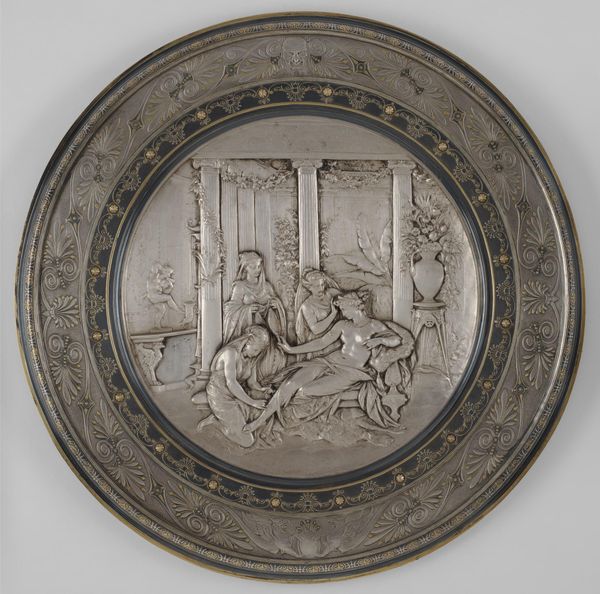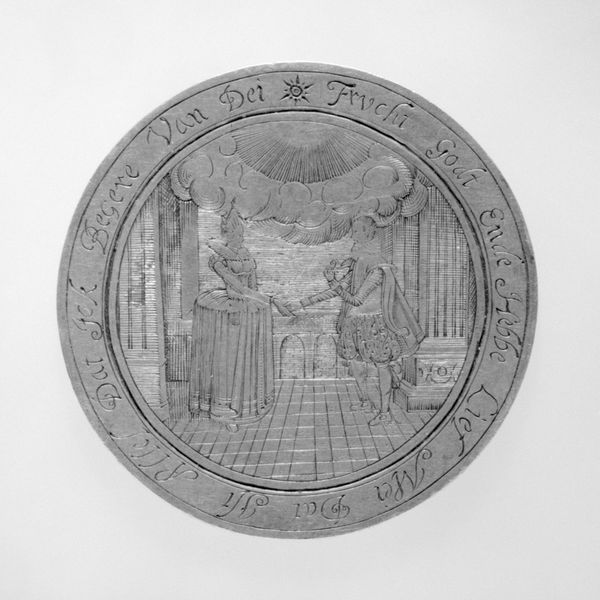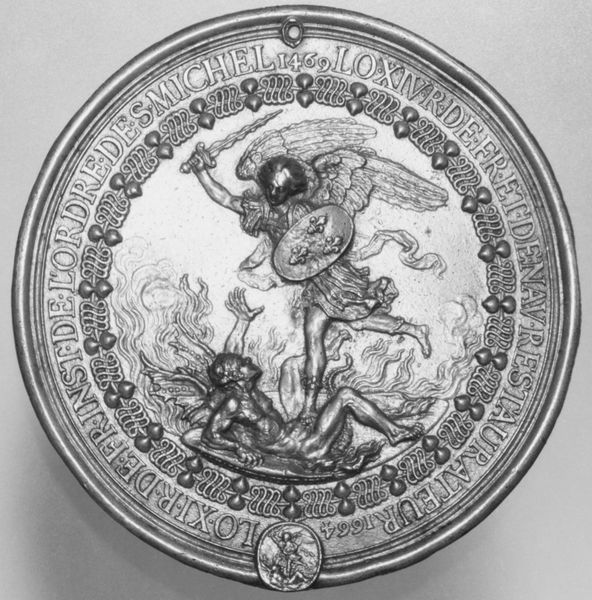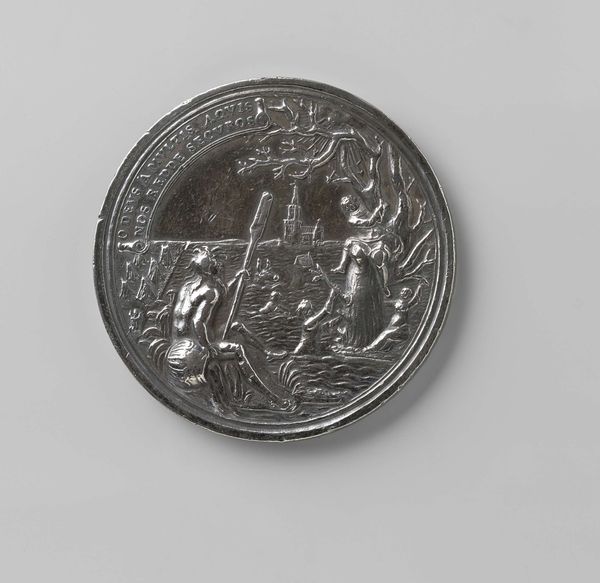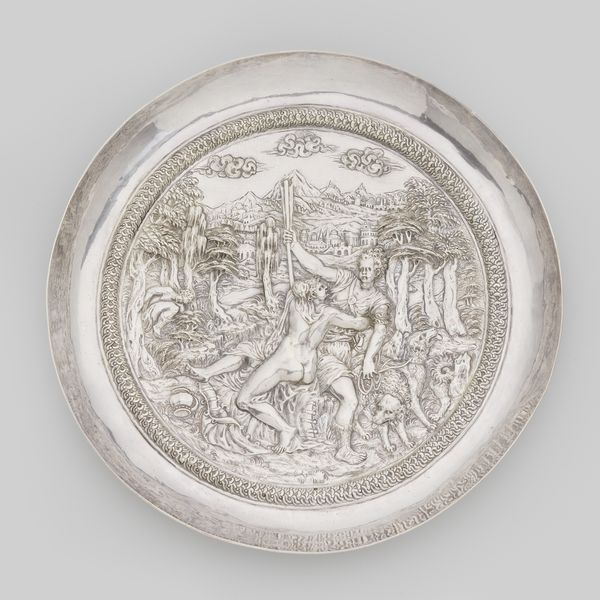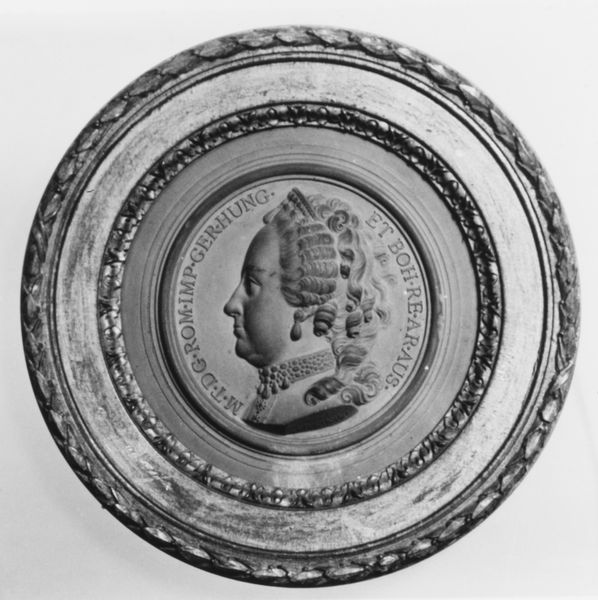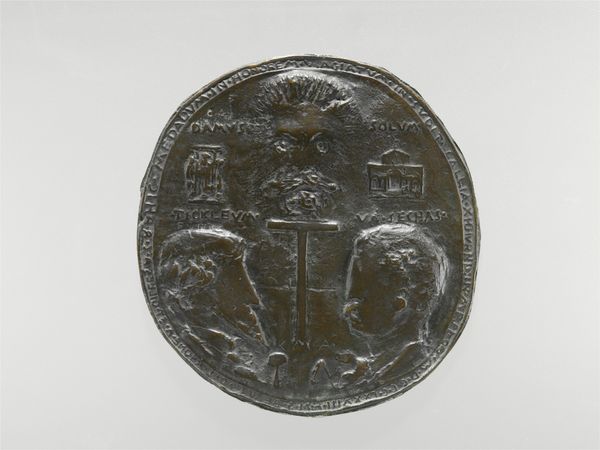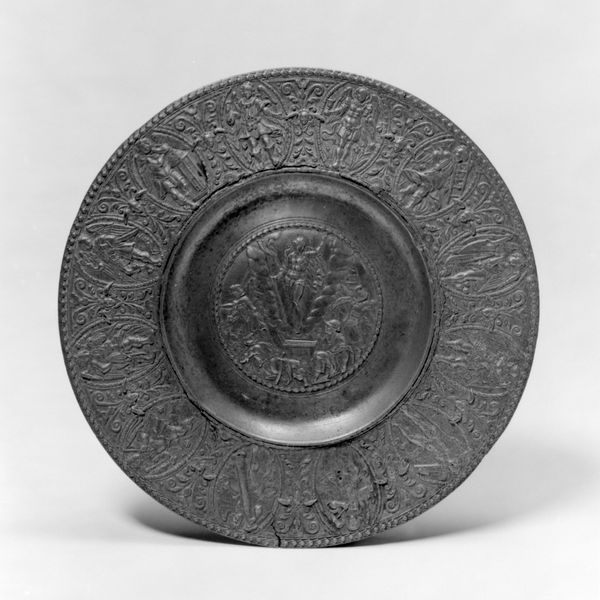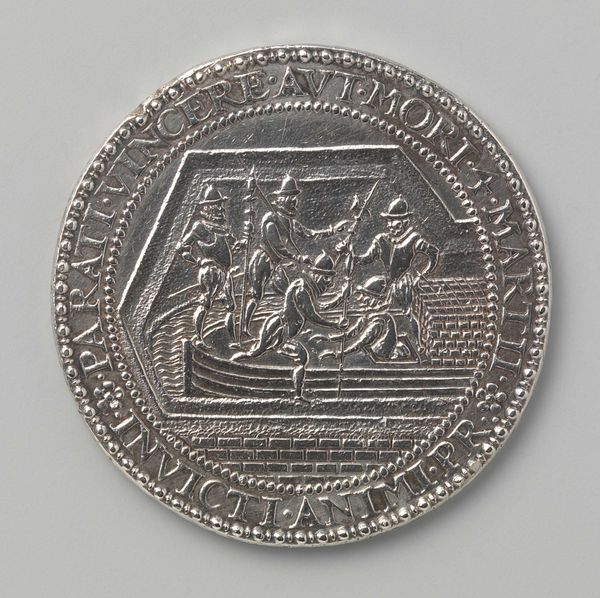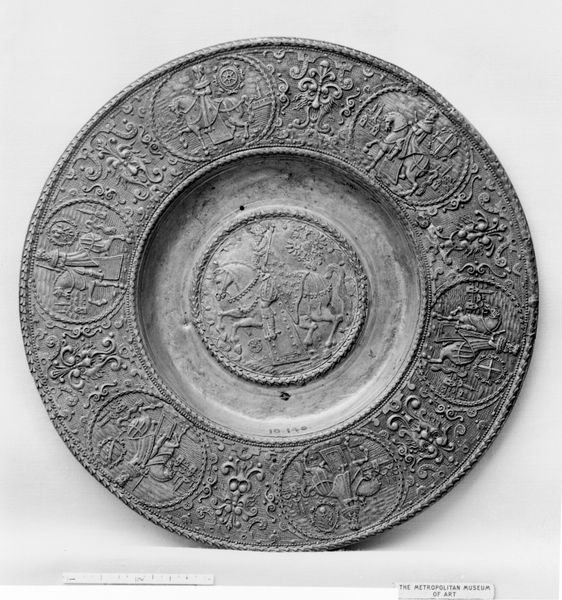
Hercules triumphant over Antaeus 1500 - 1515
0:00
0:00
metal, relief, sculpture
#
decorative element
#
metal
#
sculpture
#
relief
#
figuration
#
sculpture
#
history-painting
#
decorative-art
#
italian-renaissance
Dimensions: Diameter: 4 5/8 in. (11.7 cm)
Copyright: Public Domain
Editor: Here we have Galeazzo Mondella's relief sculpture, "Hercules Triumphant over Antaeus," dating from around 1500 to 1515. The figures are quite dynamic, caught in this intense struggle. What sociopolitical messages can you decipher in this piece? Curator: This relief provides a fascinating lens through which to view Renaissance ideals of power and control. Consider how Hercules, a symbol of masculine strength and divine right, is depicted overcoming Antaeus, who derives his power directly from the earth, from the maternal figure of Gaia. Editor: I hadn't considered that. It really highlights the break between classical paganism and Christianity that took place in the middle ages, where the maternal figure lost prominence and the "end of nature" narrative gained power. So what does that power shift mean? Curator: Exactly! The work can be interpreted as a forceful assertion of patriarchal dominance, where physical prowess and intellect – embodied by Hercules – subdue the raw, untamed power of the natural world and what that signifies: nature, paganism, maternal power. How does that narrative continue to echo? Editor: That reading certainly resonates today with debates surrounding environmentalism, gender equality, and even globalization. The visual language of power—suppressing the earth, feminizing an adversary, asserting patriarchal divine strength through symbolic masculine character—is still potent in current iconography and media! Curator: Precisely! These historical narratives often justify contemporary social hierarchies. This piece forces us to reflect on those justifications. The very choice of materials – metal, suggesting permanence and control – reinforces the narrative. Editor: It is humbling to think of artwork from the Italian Renaissance actively echoing into contemporary concerns about identity, politics, gender, and power. I learned so much! Curator: Me too, and this underlines the importance of considering art history within a broad framework of social theory. We gain so much knowledge by interpreting even so-called historical events!
Comments
No comments
Be the first to comment and join the conversation on the ultimate creative platform.


